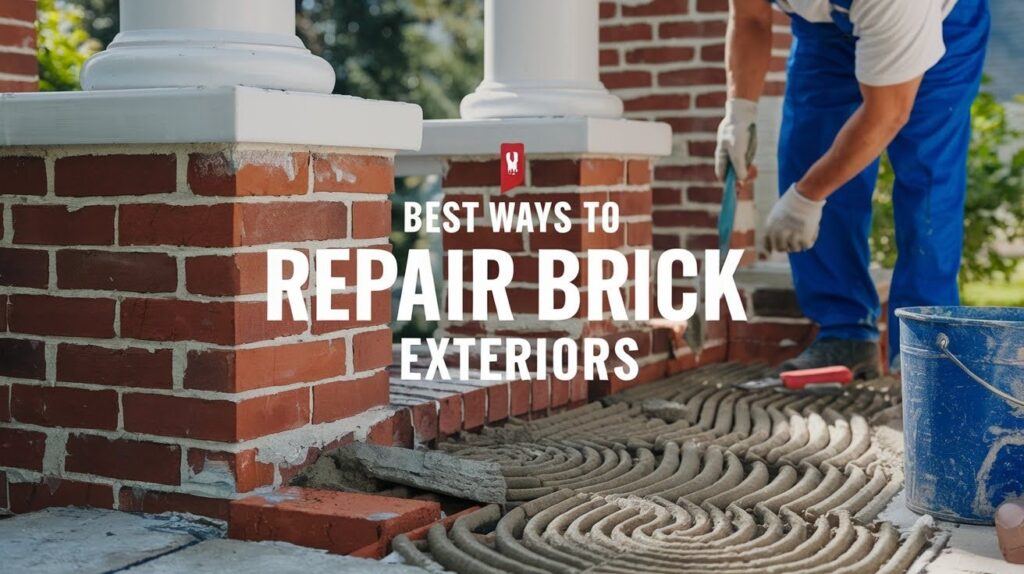Brick homes have stood the test of time for good reason. Something is reassuring about those solid, red walls that have sheltered families for generations. But even the strongest bricks need care to maintain their charm and structural integrity.
I’ve seen too many homeowners panic when they spot cracks, crumbling mortar, or water damage on their brick walls. The good news? Most brick problems are fixable with the right approach.
In this guide, I’ll walk you through the most common brick repair issues you’re likely to face and share proven techniques to keep your exterior looking great for years to come.
With some knowledge and the right tools, you can protect your investment and maintain that classic appeal that drew you to brick in the first place. Let’s get your brick exterior back in top shape.
Common Problems Seen In Brick Exteriors
Let me share the five main issues I see over and over again in brick homes.
Cracks In Bricks And Mortar Joints
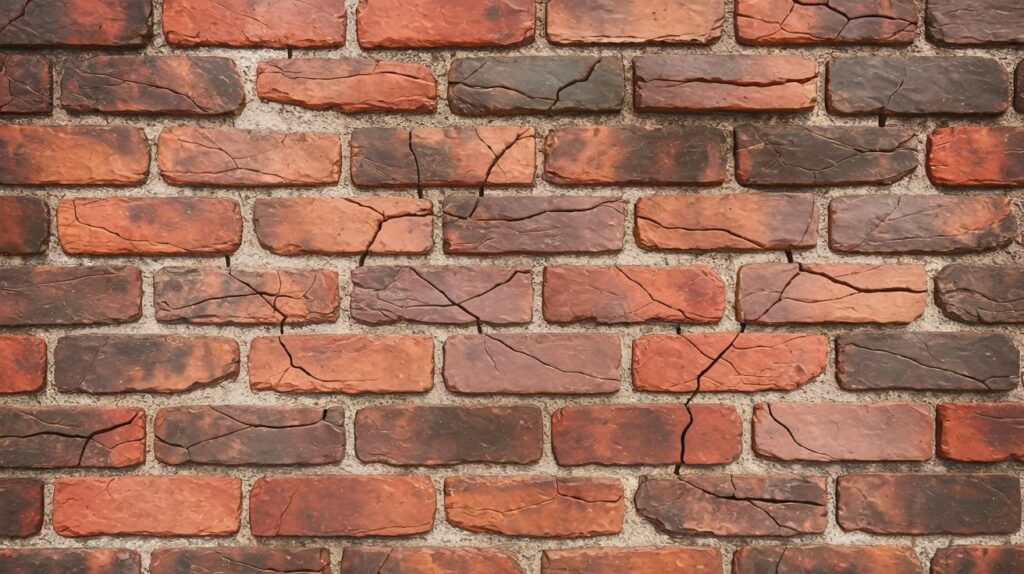
I see this problem everywhere. Small hairline cracks start innocently enough. Then they grow bigger.
Temperature changes cause your bricks to expand and contract. This constant movement creates stress. The mortar joints take the brunt of it first. You’ll notice thin lines running along the mortar. Sometimes the bricks themselves crack too.
Don’t ignore these cracks. Water gets in and makes everything worse.
Spalling Or Flaking Bricks Due To Moisture
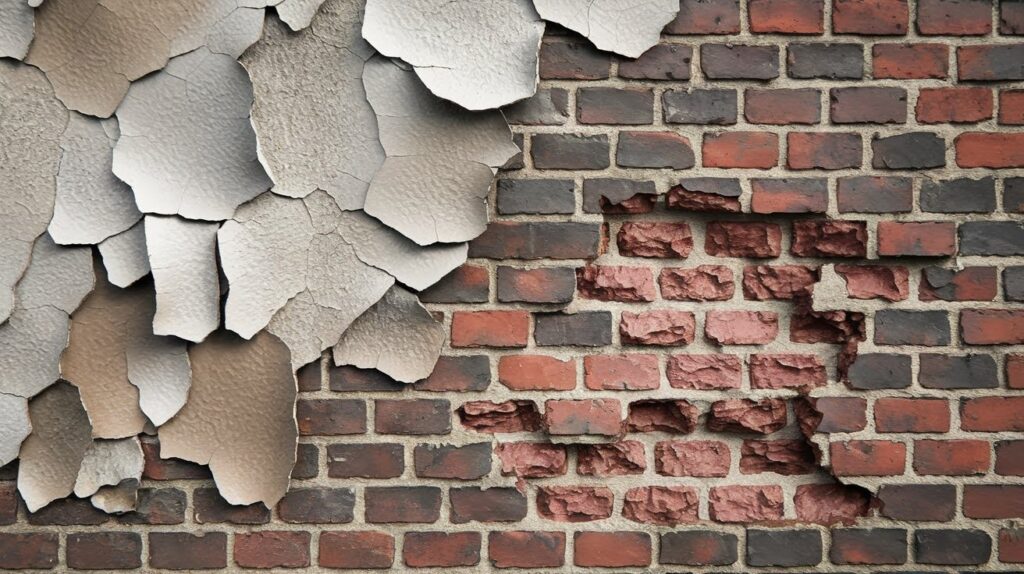
This one breaks my heart. Beautiful bricks start peeling away like old paint. The face of the brick falls off in chunks.
Moisture is the villain here. It gets inside the brick and freezes during winter. Ice expands. Your brick can’t handle the pressure. The surface pops right off.
I’ve seen entire walls need rebuilding because homeowners waited too long.
Efflorescence (White Powdery Stains)
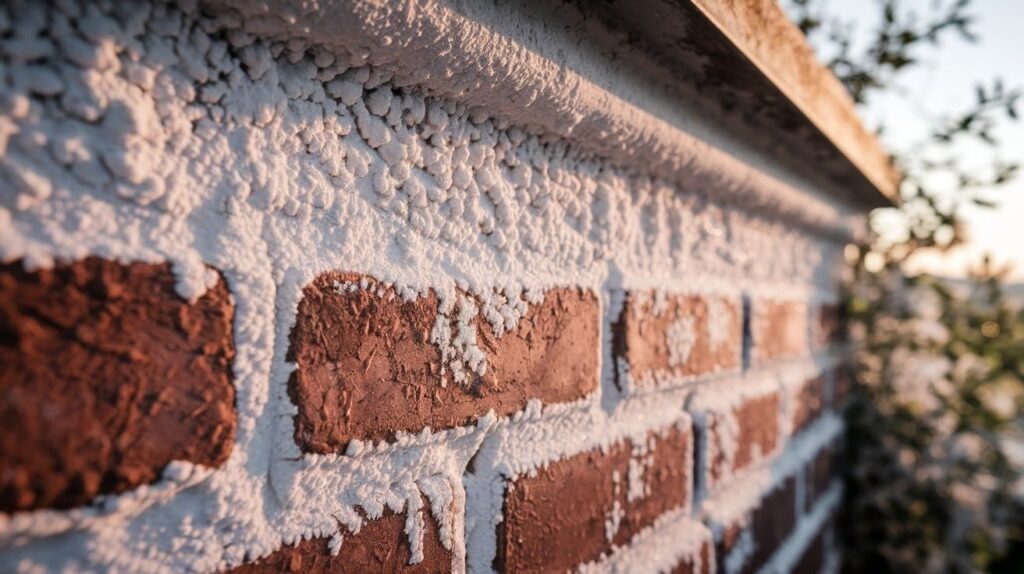
Those ugly white streaks on your brick walls have a fancy name. But the cause is simple.
Water moves through your bricks and mortar. It picks up salts along the way. When the water dries up, it leaves these salts behind. You get that chalky white residue that won’t wash off easily.
It looks terrible. More importantly, it tells you that water is moving where it shouldn’t.
Bulging Or Bowing Walls From Structural Stress

This scares people. And it should. When your brick wall starts pushing outward, something serious is happening.
Poor foundation work causes this. So does water damage behind the wall. Sometimes, tree roots are the problem. The wall can’t handle the pressure anymore.
You need professional help fast with this one.
Water Penetration And Mold Issues
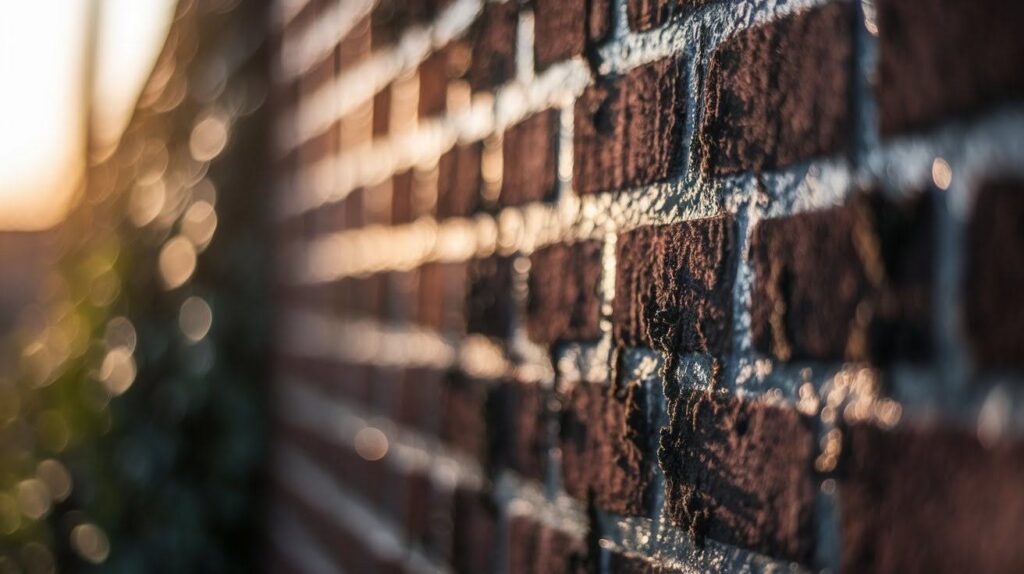
Water finds a way. Always.
Once it gets behind your bricks, mold follows close behind. You might smell it before you see it. That musty odor coming from your walls is never good news.
Water damage spreads quickly in brick homes. It rots the wood structure behind the bricks. Your repair costs multiply fast.
Inspiration Ideas To Refresh Brick Exteriors After Repair
Once your repairs are done, here are my favorite ways to give your brick walls a fresh new look.
Add A Fresh Coat Of Limewash Or Whitewash
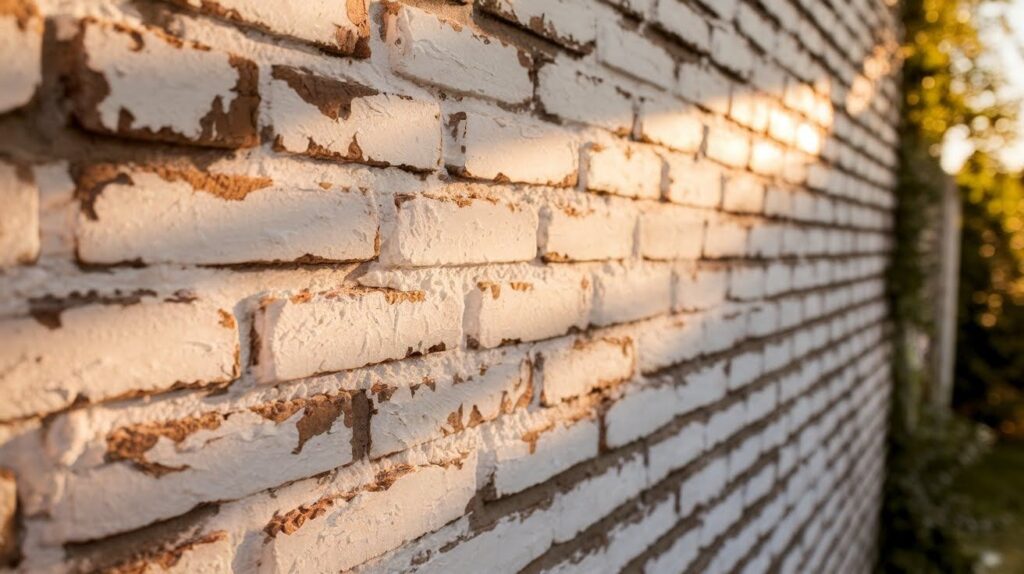
I love this option for tired looking bricks. Limewash gives you that soft, matte finish that looks incredible on older homes.
Unlike regular paint, limewash lets your bricks breathe. It soaks into the surface instead of sitting on top. You get this beautiful, slightly uneven coverage that adds character.
Whitewash is similar but gives you more coverage. Both options can completely change your home’s personality.
Use Contrasting Mortar Colors For A Modern Look
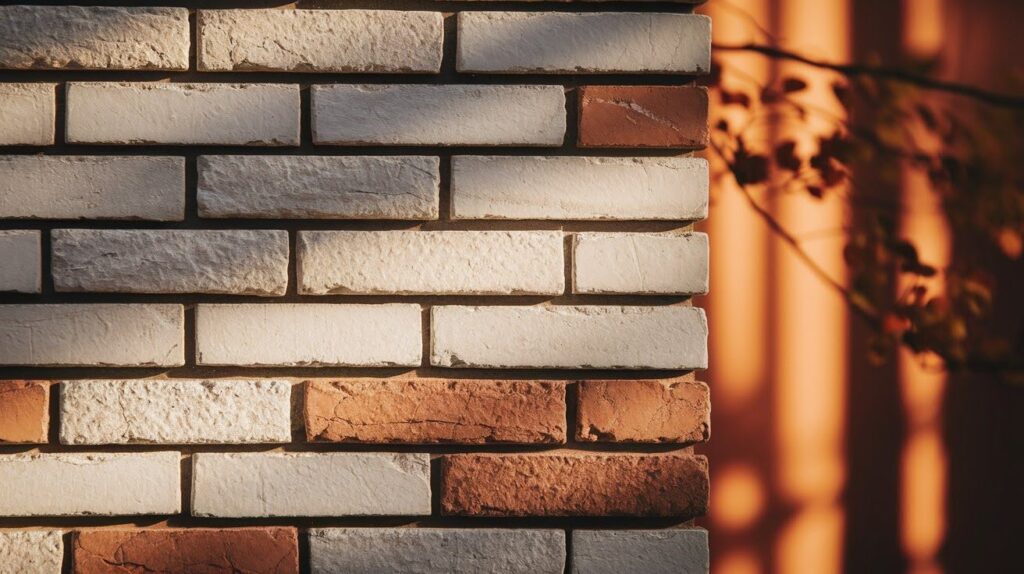
Here’s a trick most people don’t think about. Change your mortar color during repointing.
Dark mortar with light bricks creates bold lines. Light mortar with red bricks gives you a softer look. I’ve seen homeowners go from traditional to contemporary just by switching mortar shades.
The difference is remarkable. Your same old bricks suddenly look completely different.
Incorporate Landscaping To Highlight Brick Walls
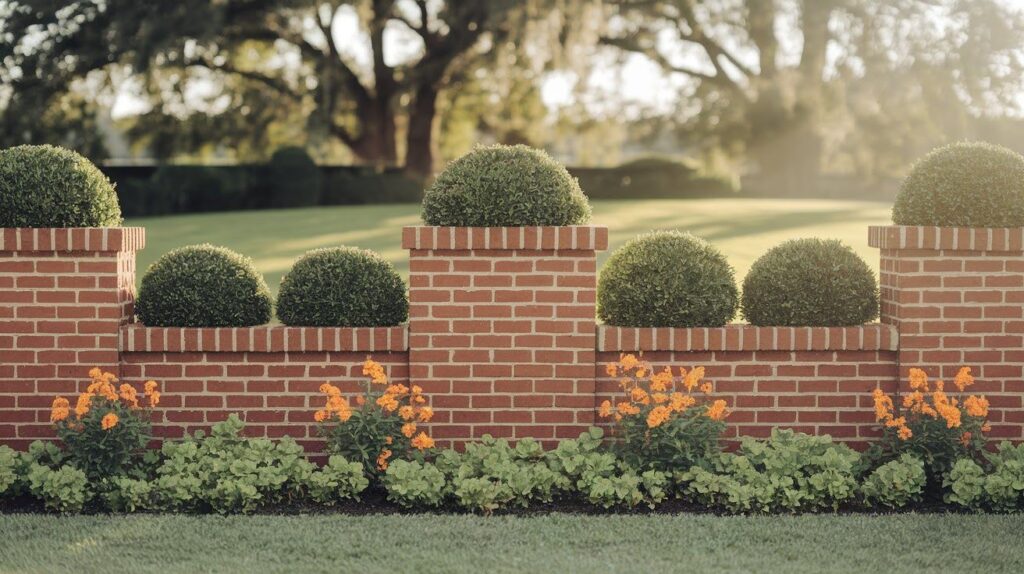
Smart plant choices make your bricks pop. I always recommend evergreen shrubs at the base of brick walls.
The green creates a perfect contrast against red or brown bricks. Add some flowering plants for seasonal color. Just keep everything at least two feet away from the wall.
Plants too close trap moisture. You don’t want that after spending money on repairs.
Add Outdoor Lighting To Enhance Brick Texture
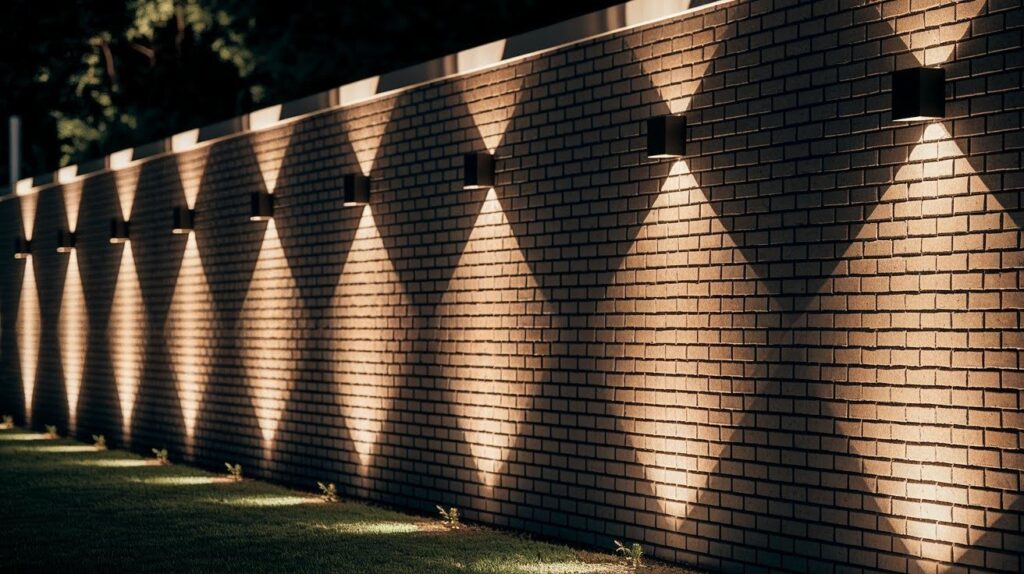
This is my secret weapon. Up lighting makes brick walls look amazing at night.
Install small lights at ground level pointing up. The shadows highlight every brick’s texture. Your wall becomes a work of art after dark.
Wall sconces work great too. They add both function and beauty to your exterior.
Combine Brick With Wood Or Metal Accents For Style
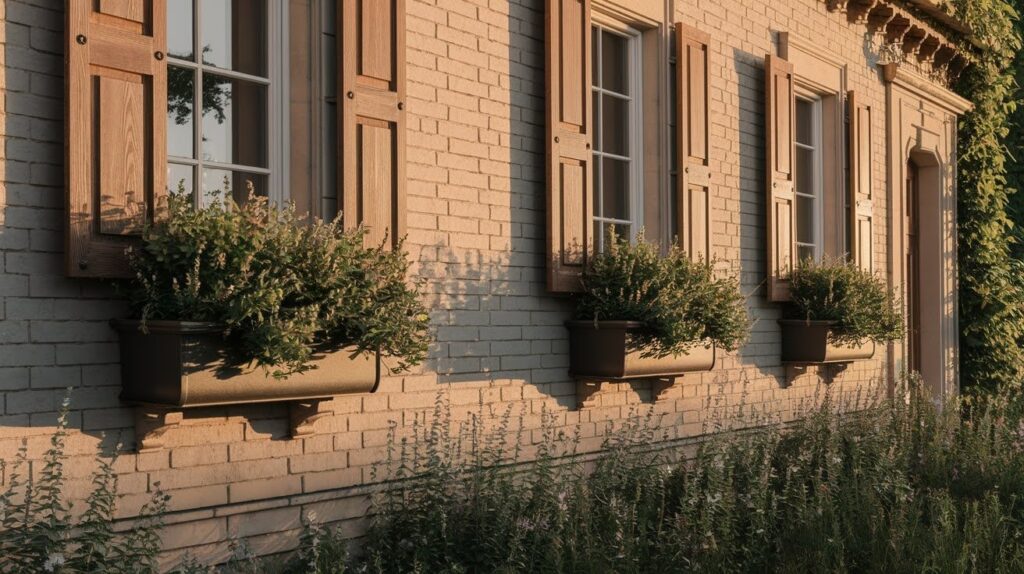
Mixed materials create visual interest. I love seeing wood shutters against brick walls.
Metal window boxes add a modern touch. Stone trim around windows breaks up large brick surfaces. Even simple wood planters can make a big difference.
The key is not overdoing it. Pick one or two accent materials and stick with them.
DIY Vs Professional Repairs
Let me help you decide which brick repairs you can tackle yourself and when you need to call in the pros.
Repairs Homeowners Can Handle

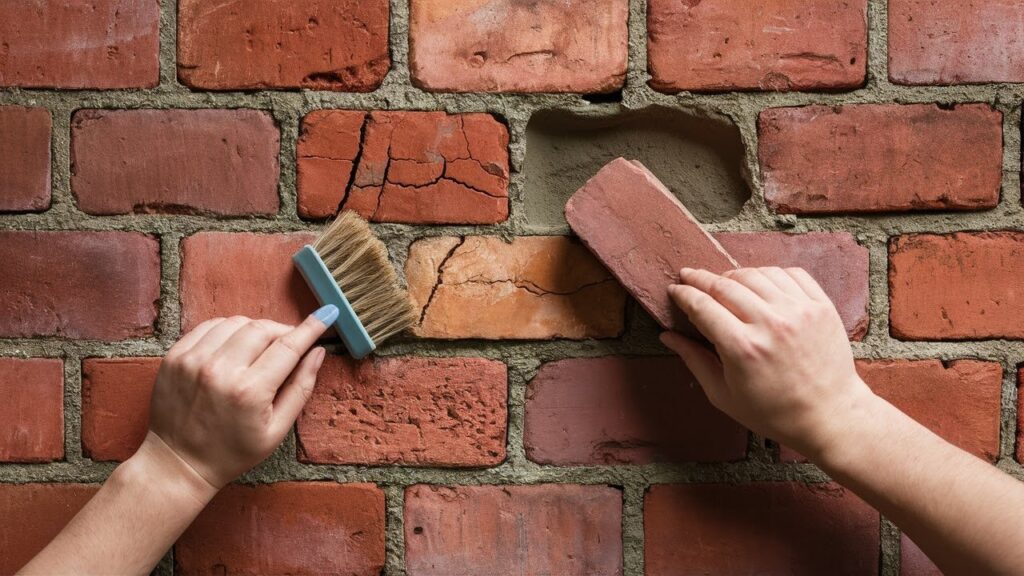
I believe in empowering homeowners to fix what they can. Small mortar repairs are totally doable for most people.
You can handle hairline cracks in mortar joints. Cleaning efflorescence off your walls is another easy win. Basic brick cleaning with a stiff brush and mild detergent works great.
Replacing a single loose brick? That’s manageable too. You just need the right tools and some patience.
But here’s the thing. Start small. Practice on a hidden area first. I’ve seen too many weekend warriors bite off more than they can chew.
Simple repointing of small sections is within reach. Get yourself a mortar rake, some pre mixed mortar, and take your time. Watch some videos first.
The key is knowing your limits.
When To Hire A Masonry Expert
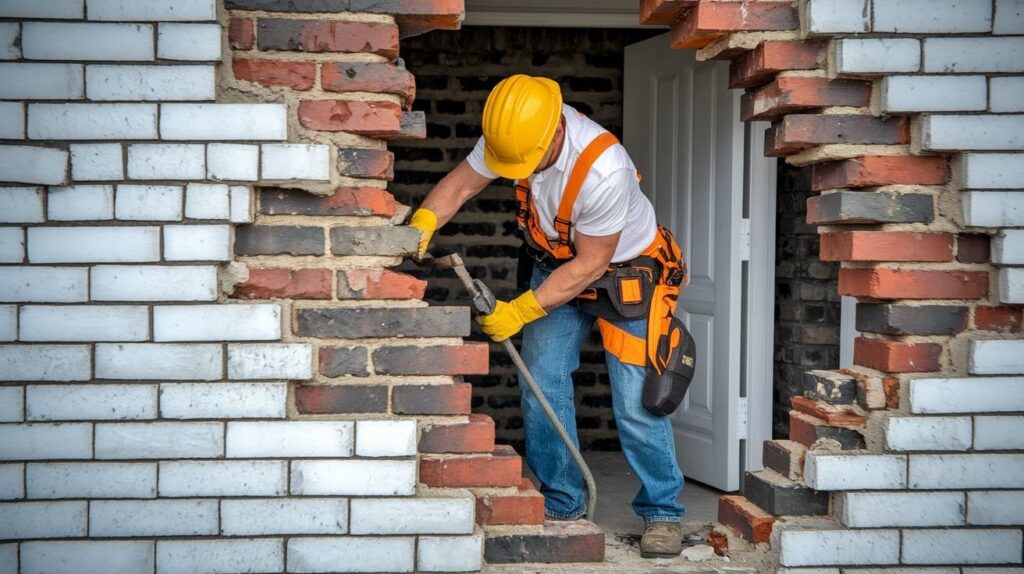
Some repairs are not worth the risk. Structural issues always need professional help.
If your wall is bulging or bowing, stop right there. Call someone immediately. This isn’t about saving money anymore. It’s about safety.
Large areas of spalling bricks need expert attention. So does any repair above the first floor. I don’t care how comfortable you are on ladders.
Water damage behind the wall requires special tools and knowledge. Professionals can spot problems you’ll miss completely.
Here’s my rule of thumb. If the repair covers more than a few square feet, get quotes from contractors. If you’re working near electrical lines or plumbing, definitely hire someone.
Your insurance might not cover damage from DIY mistakes. Think about that before you start swinging that hammer.
Trust me on this one. Some jobs are worth paying for.
Quick Tips For Brick Exterior Care
Problem Prevention:
- Check for cracks every spring and fall
- Clean gutters to prevent water overflow on bricks
- Keep plants at least 2 feet from brick walls
- Fix small cracks before they get bigger
DIY Repair Basics:
- Start with hidden areas to practice first
- Use pre mixed mortar for small jobs
- Clean efflorescence with stiff brush and mild soap
- Work in cool weather when possible
When To Call Pros:
- Any bulging or bowing walls
- Repairs above first floor level
- Large areas of damaged bricks
- Water damage behind walls
Refresh Ideas:
- Try limewash for a soft, breathable finish
- Use contrasting mortar colors during repairs
- Add up lighting to highlight brick texture
- Mix materials like wood or metal accents
Safety First:
- Never ignore structural problems
- Get multiple quotes for big jobs
- Check insurance coverage before DIY work
- Stop work if you feel unsure about anything
Conclusion
Taking care of your brick exterior isn’t just about looks. It’s about protecting your biggest investment. I’ve shown you the most common problems you’ll face and how to handle them smartly.
Remember, small repairs now save you thousands later. Those tiny cracks and white stains might seem harmless, but they’re telling you something important. Listen to your bricks.
Know your limits when it comes to DIY work. Some jobs need professional hands. There’s no shame in calling for help when safety is on the line.
Once your repairs are done, don’t stop there. A fresh coat of limewash, some smart lighting, or new landscaping can make your home look incredible. Your neighbors will wonder what you did differently.
Brick homes have character that lasts generations. With proper care and a few creative touches, yours will too.
Frequently Asked Questions
How Often Should I Inspect My Brick Exterior For Problems?
Check your brick walls twice a year, ideally in spring and fall. Look for cracks, white stains, or loose mortar during these inspections to catch issues early.
Can I Paint Over Brick Instead Of Repairing It?
Paint can hide problems but won’t fix them. It also traps moisture inside the brick, which can cause more damage over time.
What’s The Difference Between Repointing And Tuckpointing?
Repointing means removing old mortar and adding new mortar to fill the joints. Tuckpointing is a decorative technique that uses two different colored mortars for a contrasting look.
How Long Do Brick Repairs Typically Last?
Good quality repairs can last 25 to 30 years with proper maintenance. The key is using the right mortar mix and letting it cure properly.
Should I Seal My Brick Walls After Repairs?
Most brick walls don’t need sealing since they’re designed to breathe naturally. Only seal if you have persistent water problems, and use a breathable sealer made for masonry.

